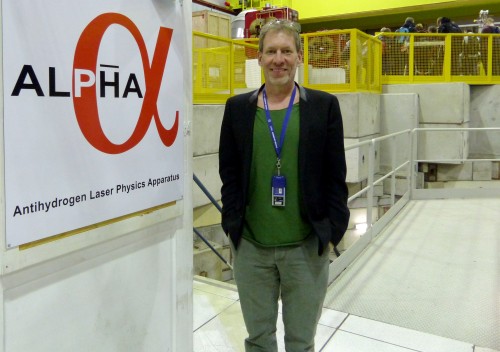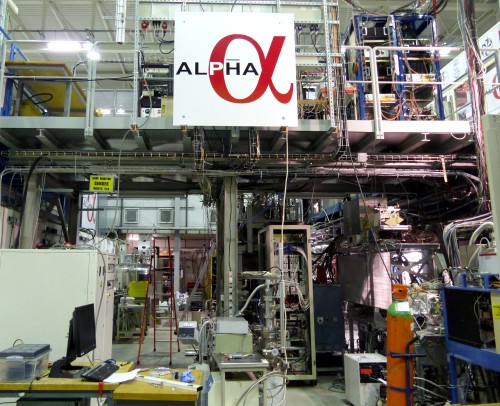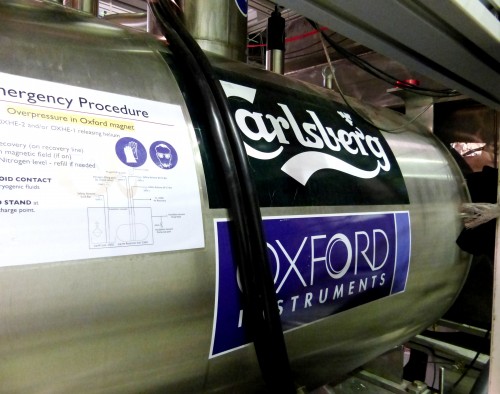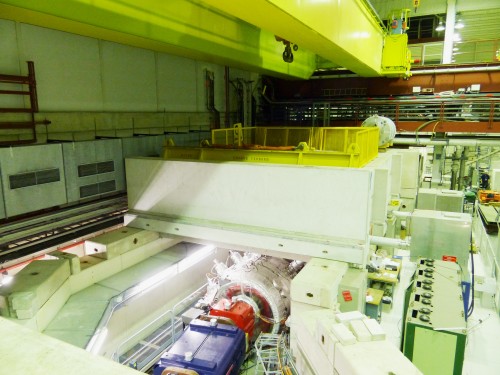
Mind over antimatter: Jeffrey Hangst at the ALPHA experiment at CERN.
By Tushna Commissariat at CERN
While visiting CERN, the world’s biggest particle-physics laboratory, it’s easy to get swept up by the excitement of the Large Hadron Collider and its detectors, especially in the run up to it being switched back on in the coming weeks. But CERN is also host to a variety of other equally exciting experiments that probe some of the biggest unanswered questions in science, such as the experiments that probe the unwieldy world of antimatter. Indeed, CERN’s antimatter programme has received considerable attention in the past, especially thanks to the now-famous book (and later, film) Angels and Demons, where some antimatter was supposedly stolen from the laboratory and used to build a bomb! Suffice to say, antimatter is of interest to physicists and the public alike and so I caught up with physicist Jeffrey Hangst, who is spokesperson of the Antihydrogen Laser Physics Apparatus (ALPHA) experiment, which I also had the chance to visit.

Antimatter factory: a view of the ALPHA 2 set-up.
ALPHA’s main aim is to study the internal structure of the antihydrogen atom, and see if there exist any discernible differences within it that set it apart from regular hydrogen. In 2010 ALPHA was the first experiment to trap 38 antihydrogen atoms (an antielectron orbiting an antiproton) for about one-fifth of a second and then the team perfected its apparatus and technique to trap a total of 309 antihydrogen atoms for 1000 s in 2011. Hangst hopes that with the new updated ALPHA 2 device (which includes lasers for spectroscopy), the researchers will soon see precisely what lies within an antihydrogen atom by studying its spectrum. They had a very short test run of a few weeks with ALPHA 2 late last year, and will begin their next set of experiment in earnest in the coming months.

Beer belly: ALPHA 2’s superconducting solenoid magnet.
Above, you can see ALPHA 2’s new superconducting solenoid magnet, which creates a constant 1 T field for trapping the charged particles. Those of you wondering precisely why the device is kitted out with a big sticker of the Danish beer Carlsberg may be interested to note that it was financed by a grant from the Carlsberg Foundation (which has been providing support and funding for the sciences since the late 1800s) and was built by Oxford Instruments in the UK. The solenoid is where the laser and microwave spectroscopy takes place. This is particularly noteworthy as the carefully created and trapped antiprotons in the solenoid are kept at the lowest possible temperature (to ensure that they do not escape the confines of their magnetic trap) so the researchers have to be particularly careful about introducing a laser which could cause things to get a tad too hot.

Ring around: Looking down on the Antiproton Decelerator (AD).
ALPHA is housed within CERN’s Antimatter Factory, which contains its Antiproton Decelerator (AD) – this provides the low-energy antiprotons studied by the four antimatter experiments. AD will soon be joined by the Elena ring, which will provide many more anti-atoms each month. Thanks to some upgrades being made, I caught a peek at the AD (above), which is normally hidden away behind huge concrete boulders to shield the experiments from it.
Suffice to say that it was a pretty exciting morning that I spent wandering around the one place in the universe where, as far as we know, antimatter is being produced. To delve further into the antiworld and the cutting-edge research happening at ALPHA in the coming months, tune in to our podcast next month, which will feature Hangst.
Trackback: Physics Viewpoint | What’s the latest matter with antimatter?